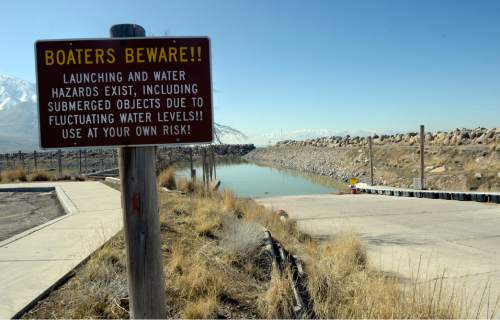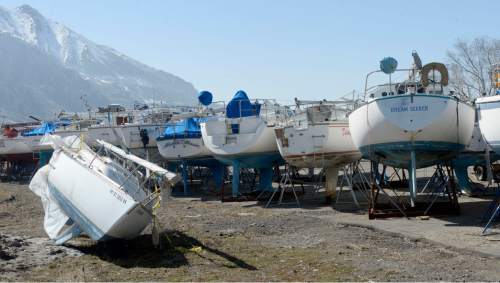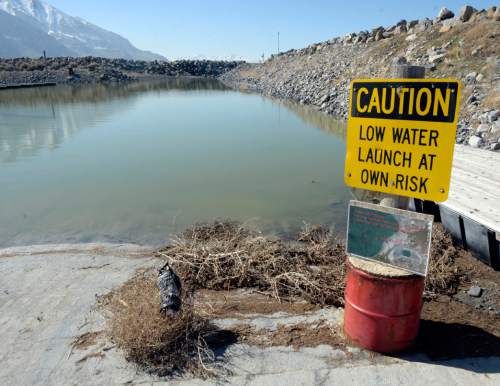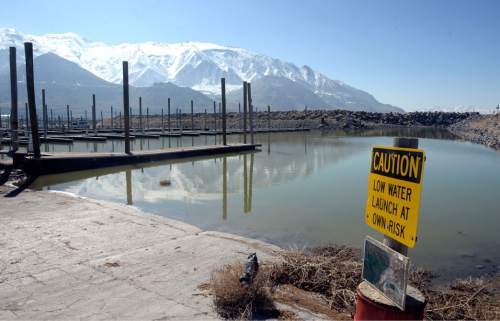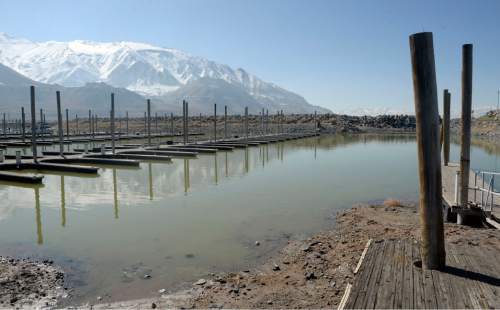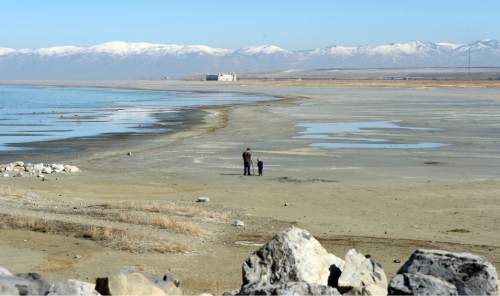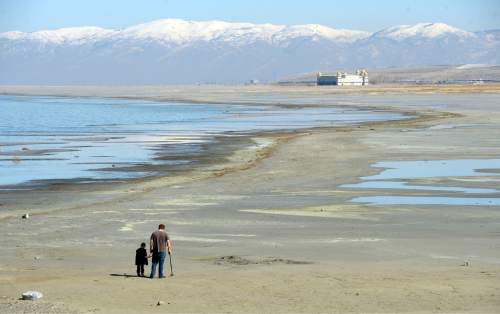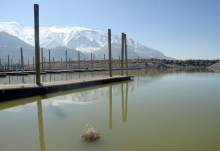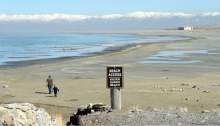This is an archived article that was published on sltrib.com in 2016, and information in the article may be outdated. It is provided only for personal research purposes and may not be reprinted.
Competing demands for water have greatly reduced inflows to Utah's quickly shrinking Great Salt Lake, threatening the $1.3 billion in economic activity the lake generates and seasonal habitat for millions of migratory birds while pulling tons of dust off the exposed lakebed.
Extended drought has contributed to low water levels, but upstream diversions over the decades have put the level 11 feet lower than it otherwise would be, according to a paper released by Utah State University on Wednesday.
"As Utah moves forward, we need to be aware of the impacts of lowered lake levels and make decisions that serve the interests of all Utahns. In particular, proposals to further develop the water supply of the Great Salt Lake should carefully consider potential impacts to the health of the lake and examine the trade-offs," states the brief, prepared with the state Division of Water Resources, Salt Lake Community College and the Division of Wildlife Resources.
As a result of past diversions, the lake's volume is about half what it would otherwise be, 550 square miles of lakebed are now exposed, and salinity is rising on the South Arm. Salt concentrations could disrupt lake chemistry in ways that could endanger brine shrimp cyst production, which sustains birds and an industry that harvests eggs for export to aquaculture operations.
Most of the Farmington and Bear River bays are mudflats.
"It is not just rainfall driving things. We have a big effect, too," said lead author Wayne Wurtsbaugh, a USU professor of watershed science who has long studied the lake's aquatic ecology. "We can solve our water shortages by developing more water, but the other way is to get better conservation measures, and not just urban users. We need to work on agriculture. With our water laws, it is difficult to do."
Agriculture consumes nearly two-thirds of the water in the lake's basin. Consumptive water use has reduced inflows by 39 percent over the past 150 years.
As the lake shrinks, however, it has less surface and higher salinity, factors that slow evaporation.
"The Great Salt Lake is complicated, but we hope this paper starts a meaningful conversation about how important the lake is to our ecosystem, economy and quality of life," said co-author Craig Miller, a senior engineer with the Division of Water Resources. "Everybody wants water in Utah, so the challenge is to find balance between demands and needs so we can have the least amount of negative impacts to the environment of the lake and our economy. There's going to be some give and take."
The lake recently achieved a new historic low, dipping below the record set in 1963 on the North Arm, where the elevation this week stands at 4,190.8 feet above sea level. The elevation on the southern shore is 4,193.3 feet, less than 2 feet above the historic low, according to the U.S. Geological Survey. The paper reported the natural mean level of the lake is 4,207 feet.
The level of the South Arm, which receives infusions of fresh water from the Bear, Weber and Jordan rivers — not to mention about 90 percent of the discharge from the state's wastewater treatment plants — is always higher than the North Arm. The two are separated by a railroad causeway that was completed in 1959 and was breached in 1984 to relieve flooding on the south.
That causeway has concentrated salinity on the north to saturation levels, while reducing salinity on the South Arm. Levels are so low that there is no exchange of water between the arms, but that is expected to change with the Union Pacific Railroad set to remove a 185-foot section of the causeway later this year and span the gap with a bridge.
In the past two months, the North Arm has dropped another half-foot, while the South Arm has come up about 9 inches.
"All the reservoirs are drawn down, so when we get a good runoff, it doesn't help much because it's captured in those reservoirs," Wurtsbaugh said.
Representatives of the brine shrimp and mineral industries on Wednesday took shots at proposed legislation — SB80 and HB257 — that would divert sales tax revenue toward developing the Bear River and Lake Powell Pipeline projects. The Bear River project is expected to reduce the level of the lake by 8.5 inches, although its water is not expected to be needed for another 25 years, thanks to conservation measures and conversion of agricultural land to other uses.
Mineral extraction along the receding shoreline no longer has easy access to the lake's brine, necessary for evaporative extraction, and some operations are cutting costly channels to connect ponds with the lake miles away.
"US Magnesium is not supportive of any projects that negatively impact mineral extraction on the Lake. With the lake level already very low, the proposed Bear River Project will stress all of the extraction industries," said Tom Tripp, director of technical services for US Magnesium, which operates on the western shore, near Rowley. He said China controls 87 percent of the world's production of magnesium, used as a structural metal vital to the aviation and electronics industries.
Tripp offered these remarks just prior to a legislative hearing on SB80, which cleared the House Revenue and Taxation Committee in a 7-5 vote. The bill would direct up to $200 million over five years to water projects.
"The Great Salt Lake brine shrimp resource is a cornerstone of global aquaculture," added Don Leonard, CEO of Great Salt Lake Brine Shrimp Cooperative, Inc. "SB80 will diminish this sustainable resource and our business as a result."
Brian Maffly covers public lands for Salt Lake Tribune. Maffly can be reached at bmaffly@sltrib.com or 801-257-8713. Twitter: @brianmaffly


